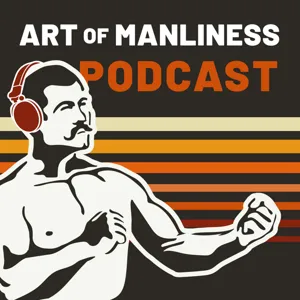Podcast Summary
Historical Role of Fire Towers in Wildfire Prevention: Fire towers have been instrumental in wildfire prevention since the early 20th century, with thousands of towers manned by lone individuals who stay vigilant for signs of wildfires and report them promptly for quick response and containment.
Fire towers in the American West have played a crucial role in wildfire prevention since the early 20th century. These towers, manned by lone individuals, offer a unique perspective on nature and solitude. The job of a fire watcher involves staying vigilant for signs of wildfires and reporting them promptly to allow for quick response and containment. The history of fire towers dates back to the early US Forest Service days, with the goal of early detection and rapid response to forest fires. By the 1940s, there were approximately 8,000 fire towers across the country. Notable writers like Norman Maclean and Jack Kerouac have documented their experiences as fire lookouts, highlighting the value of solitude and the importance of staying connected despite the isolation. Today, fire watchers continue to play a vital role in protecting our wilderness areas from the threat of wildfires.
Fire lookout towers: A declining tradition of human connection with nature: Fire lookout towers, once a symbol of human connection with nature, are disappearing due to development, technology, and a shift towards automated detection methods. These towers offer a unique perspective on nature and solitude, strengthening relationships and testing personal limits.
Fire lookout towers, once a common method for detecting wildfires, have declined significantly in number due to development, technological advancements, and a shift towards automated detection methods. These towers, which offer a unique and isolated living experience, have been a part of honeymoon traditions in the past. The speaker shares his personal experience of discovering his love for this lifestyle while working as a fire lookout in New Mexico in 2002. The tradition of fire lookout towers, though dwindling, continues to offer a unique perspective on nature and solitude. The speaker's encounter with a former lookout couple further emphasizes the significance of this experience in testing and strengthening relationships. The decline of fire lookout towers represents a loss of human connection with nature and the natural world, as technology takes over.
Monitoring Wildfires in the Gila National Forest: The Gila National Forest in New Mexico, with its large size and arid climate, requires numerous fire lookout towers for early wildfire detection and response. Tools like radios and the Osborne Firefinder aid in locating and communicating about wildfires in this forest's roadless wilderness area, where many fires occur.
The Gila National Forest in New Mexico, with its large size and high susceptibility to wildfires due to its arid climate and frequent lightning strikes, requires a significant number of fire lookout towers to ensure timely detection and response. The fire season in this area typically lasts from April to August, and lookouts use tools like radios and the Osborne Firefinder to triangulate the location of smoke from wildfires and communicate with other lookouts and ground crews. The forest covers 3.3 million acres, and its roadless wilderness area of half a million acres is particularly in need of monitoring due to the high number of wildfires that occur each season. There are currently 10 lookout towers staffed in the Gila National Forest, making it one of the forests with the most lookouts in the lower 48 states.
Spotting Fires from a Tower: A Unique Connection to Nature: Fire lookouts discover and name fires, providing crucial vigilance to prevent wildfires and experiencing the thrill of discovery and the peace of solitude in nature
Being a forest fire lookout offers a unique combination of excitement, isolation, and connection to nature. The lookout's role involves spotting fires from a distance and sounding the alarm, which can still bring an adrenaline rush even after many seasons. Lookouts typically live in simple accommodations, such as a cabin below the fire tower, and can be relatively isolated from civilization, but still within reach. The experience of solitude in nature is a significant aspect of the job, allowing for a deep connection with the natural world. Fire lookouts name the fires they discover, often based on local landmarks, and their vigilance is crucial in preventing wildfires from spreading. Overall, the job offers a rare opportunity to witness and protect the natural world while experiencing the thrill of discovery and the peace of solitude.
The Joy of Balancing Solitude and Sociability in the Wilderness: Spending time alone in nature can be rewarding, but human connection is valuable too. Strangers who share a love for the wilderness can become good companions, and finding balance between solitude and sociability can lead to personal growth.
Living in solitude for extended periods in the wilderness can be a delightful experience for some people, despite the occasional interactions with strangers. The speaker, who spends his summers working as a fire lookout, cherishes his time alone but also values social interactions. He has found that those who make the effort to hike long distances for the pleasure of it are usually good people. Over the years, he has come to appreciate the balance between solitude and sociability and has learned to be welcoming to strangers who visit the lookout. During the off-season, he gets anxious for the upcoming wilderness experience but also enjoys socializing with friends during his days off. At the end of the season, letting go is a challenge. The speaker's experience shows that solitude can be transformative and that people can adapt to different living situations, cherishing the unique aspects of each.
A fire lookout's unique perspective on nature: Fire lookouts appreciate the balance between solitude and sociability, observe fires' impact on a grand scale, and connect with nature's intricacies, requiring patience, adaptability, and deep appreciation.
Working as a fire lookout offers a unique perspective on nature, encompassing both the micro and macro levels. The firelookout appreciates the balance between the solitude and sociability, and the beauty of the high country and the changes in the landscape, despite the harsh conditions and short season. The experience includes various moods and weather, from windy and noisy to quiet and serene, requiring adaptability and appreciation for the natural world's ever-changing aspects. The observation of the fires and their impact on the landscape on a grand scale adds to the sense of awe and responsibility towards preserving nature. The micro details, such as observing lizards and salamanders, provide a sense of connection and wonder to the intricacies of the natural world. Overall, the firelookout's role offers a profound and multifaceted relationship with nature, requiring patience, adaptability, and a deep appreciation for the interconnectedness of the natural world.
Unique experiences and activities in a remote tower: Living in a remote tower provides abundant experiences and activities, from maintaining facilities to cherishing the luxury of slower thinking.
Living in a remote tower on a mountain offers an abundance of unique experiences and activities that keep the author engaged and stimulated. From maintaining facilities and gathering resources, to reading and writing, the author finds plenty to see and do, making it difficult to recall a moment of boredom. The use of different tools for writing, such as longhand and a typewriter, also affects the writing process and slows down the author, allowing for clearer thinking. Another habit the author has developed is listening to baseball games on the radio instead of watching them on TV, a connection to his childhood growing up on a farm. This habit, along with the slower pace of life in the tower, allows the author to cherish the luxury of thinking and working at a slower pace, which is not common in most jobs.
Appreciating the Active Experience of Live Sports and the Natural World: Live sports broadcasts offer an active mental engagement and nostalgic experience, contrasting the passive experience of TV. Wildfires have grown in scale, highlighting the importance of minimizing human impact on land for wildlife and preservation.
The appreciation for the active mental engagement and nostalgic experience of listening to live sports broadcasts, as opposed to the passive experience of watching them on television. Another key takeaway is the observation of the increasing scale of wildfires in recent years, and the importance of minimizing human impact on the land for its health and preservation of wildlife. The speaker shares his personal experience of witnessing wildfires in New Mexico and the contrasting beauty of the untouched wilderness versus the urban landscape. Ultimately, the speaker values the wilderness and its natural web of life, emphasizing the importance of preserving it.
Unique and cherished firewatch experience but competitive to join: Firewatch is a cherished experience with limited jobs, prioritizes military experience, and has a competitive hiring process.
Working as a firewatch is a unique and cherished experience, but it's also extremely competitive due to the limited number of jobs available. Many firewatchers have been in the role for decades and find it hard to leave, making it difficult for newcomers to break in. The Forest Service prioritizes hiring those with military experience. To learn more about this work, visit Philip Connors' website at www.philipconners.com. If you're interested in this line of work, be prepared for a competitive hiring process. Connors is the author of "Fire Season: Field Notes from a Wilderness Lookout," available on Amazon.com and in bookstores. For more resources on this topic, check out our show notes at AOM.IS/firewatch. Remember, listening to podcasts is great, but applying what you learn is even better. Encourage yourself to take action.













